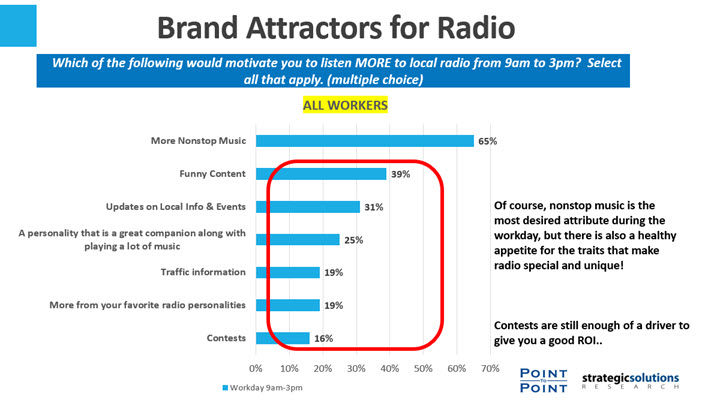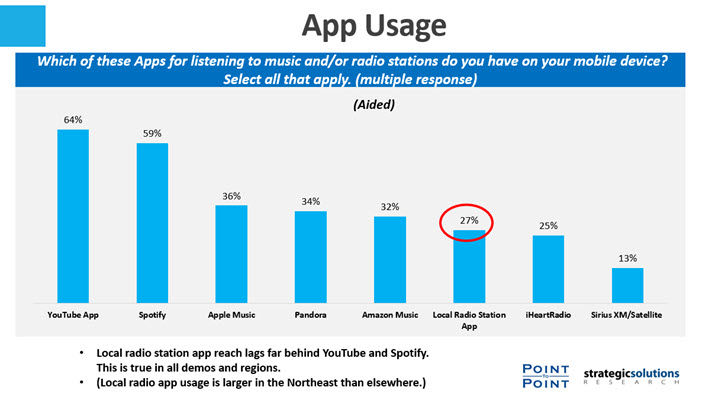Research: Local Radio Could Gain From More App Activations.
- Inside Audio Marketing

- Apr 24, 2024
- 3 min read

The majority of U.S. workers are at a job site daily, and almost 90% of them work at least in hybrid mode. But with work-from-home levels still above the pre-pandemic era, capturing the listening of full-time workers who commute remains key for radio stations to win the ratings game.
That’s just one of several insights revealed Tuesday (April 23) in the second installment of a three-part webinar called “What Workers Want,” a collaborative effort between audience development company Point-To-Point Marketing and Strategic Solutions Research, a full-service market research firm.
The firms conducted audio usage research — including consumption, perceptions, expectations and desires — focused exclusively on U.S. workers, in what they say is a “first-ever of its kind.” The findings presented Tuesday by Point-To-Point CEO Tim Bronsil and Strategic Solutions Research Executive VP/Partner Hal Rood focused on “The Workday and Headphone Usage.”
While local radio is undeniably more challenged during the workday than it once was, listeners still value many things about it, including its connection to the community (42%); music and music variety (40%); radio personalities (25%); local news, traffic and weather (20%); entertainment (15%); and convenience/ease of use (13%).
Among the things listeners don’t like: too many commercials (30%); too much talking about things they don’t like (24%); nothing (22%); and repetitive music (20%).
So, a question to consider, posed by Rood: Is local radio doing all that it can to fight back against its competitors and become a local destination that listeners can connect with?

One way might be to offer a better mix of music and personality, the researchers said. Heavy users of radio, according to the findings, want more than just music. Listeners also say they want stations to deliver things like funny content; updates on local information and events; a personality that’s a great companion; traffic reports; and contents — all features that live squarely in local radio’s wheelhouse.
“A lot of radio stations, I think, are making a real mistake by stripping out all the talk and all of the personality from the middle of the day,” Rood said. “Radio is not doing itself any service by doing that. In fact, we’ve advocated adding additional talk breaks to the middle of the day, to the workday hours, so the listener knows that there’s a host on the other side… There’s nothing wrong with talking over the intro of a song and with a little bit of companionship for 10 seconds to let the listener know that they’re not alone.”
Another strategy for local radio stations is to step up their respective efforts when it comes to app activations. That’s because, the research found, streaming from a phone is the most popular way to consume audio at work. Nearly eight in 10 listeners, in fact, stream audio more than listening via an AM/FM radio device, according to the survey.
Local radio station app reach, the research shows, trails far behind YouTube and Spotify — in all demos and regions.

“Radio really needs to think about bold initiatives to double its share of app activations,” Bronsil said. “There are multiple ways to drive downloads. The fact that it’s free is Number One, but contesting and personality interactions are also effective.”
The study surveyed 1,200 U.S. radio listeners who work full-time or part-time — men and women 18-54. The listeners over-index: they all listen to local radio stations 30 minutes or more per weekday. The sample was geographically balanced, with no weighting of the data.




Comments